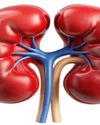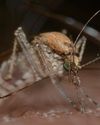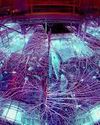Human Metapneumovirus (HMPV): Unveiling the Silent Respiratory Threat
Scientific India
|March-April 2025
Human Metapneumovirus (HMPV), a highly significant but underappreciated pathogen, is responsible for a substantial number of respiratory infections worldwide.

Since its discovery in 2001, HMPV, a member of the Pneumoviridae family, has gained recognition for its potential to cause severe respiratory illness across different age groups, particularly in vulnerable populations such as young children, the elderly and immunocompromised individuals. Despite its clinical significance, HMPV has not received the same level of attention as other common respiratory pathogens, such as Respiratory Syncytial Virus (RSV) or influenza, leaving a significant knowledge gap and underreporting of its impact.
Virology and Epidemiology
HMPV is an envelope, negative-sense RNA virus that shares genetic similarities with RSV, though they belong to different genera within the Pneumoviridae family. The virus is categorized into two major genotypes: A and B, which are further subdivided into multiple subgroups based on genetic and antigenic variations. These genotypes are associated with differing clinical manifestations, epidemiological patterns, and transmission dynamics.
The viral genome encodes essential structural proteins, including the fusion (F) protein and glycoprotein (G), both of which play key roles in viral infectivity and immune evasion. The F protein mediates viral entry by facilitating fusion with the host cell membrane, while the G protein is involved in viral attachment to host cell receptors and modulating the host immune response. The understanding of these molecular interactions is crucial in the design of antiviral therapies and vaccines. Recent studies have reported the identification of mutations in the F and G proteins that could affect viral virulence, transmission, and the host's immune response. HMPV circulates seasonally, with peak incidences often observed during late winter and early spring.
Clinical Manifestations
Denne historien er fra March-April 2025-utgaven av Scientific India.
Abonner på Magzter GOLD for å få tilgang til tusenvis av kuraterte premiumhistorier og over 9000 magasiner og aviser.
Allerede abonnent? Logg på
FLERE HISTORIER FRA Scientific India
Scientific India
Japanese physicists were the first to measure the most tolerant entanglement state, the W state
There are many unusual things that happen in the world of quantum physics.
3 mins
September - October 2025

Scientific India
The Fifth Force: Could It Unlock the Secret of Dark Matter?
What if the universe is powered by a force we've never seen before? For centuries, science has explained nature with four fundamental forces.
3 mins
September - October 2025

Scientific India
A flu test you can chew
As flu season nears in the northern hemisphere, scientists are exploring a surprising new way to detect infection: through taste.
1 mins
September - October 2025

Scientific India
Lab-Grown Kidney Brings Artificial Organ Dream Closer to Reality
In a major leap toward bioengineered organ replacement, scientists have successfully grown human kidney 'assembloids' in the laboratory that mimic key structural and functional features of natural kidneys.
1 min
September - October 2025

Scientific India
Your pumpkin might be hiding a toxic secret
Pumpkins, squash, zucchini, and other members of the gourd family have a surprising trait: they can take up pollutants from the soil and store them in their edible parts.
1 mins
September - October 2025

Scientific India
2025 Nobel Prize in Physics Reveals Quantum Secrets in Superconducting Circuits
The 2025 Nobel Prize in Physics has been awarded to John Clarke, Michel H. Devoret, and John M. Martinis for their pioneering experiments that brought quantum mechanics from the invisible atomic world to the macroscopic scale a system large enough to hold in your hand.
1 mins
September - October 2025

Scientific India
Genomic Evidence Redefines the Evolutionary Age of Mosquitoes
A new genetic analysis has shaken up what we thought we knew about one of humanity's most notorious pests the mosquito.
1 min
September - October 2025

Scientific India
Nobel Prize in Chemistry 2025: Building Molecular Architectures with Room to Breathe
In a scientific breakthrough that bridges molecular design with planetary-scale problems, the 2025 Nobel Prize in Chemistry has been awarded to Susumu Kitagawa, Richard Robson, and Omar Yaghi.
1 mins
September - October 2025

Scientific India
Guardians of Immunity: Nobel Prize 2025 Honors Discoveries that Keep the Immune System in Check
The 2025 Nobel Prize in Physiology or Medicine has been awarded to Mary E. Brunkow, Fred Ramsdell, and Shimon Sakaguchi for their groundbreaking discoveries in the field of peripheral immune tolerance a crucial mechanism that prevents the body's immune system from turning against itself.
1 mins
September - October 2025

Scientific India
'Is cold nuclear fusion feasible?
In early May 1989, two chemists from the University of Utah, Pons and Fleischmann, arrived in Washington, U.S.A. The aim is to present their findings to members of the US Congress.
3 mins
September - October 2025
Listen
Translate
Change font size

